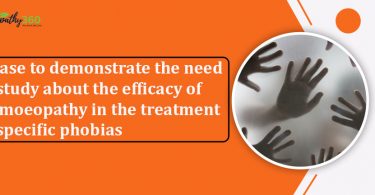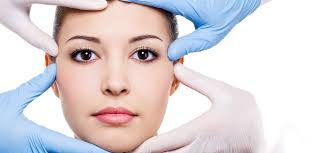ABSTARCT.
The incidence of Musculoskeletal diseases in clinical practice are very common in now- a- days.. This disease produces a definite problem for aged persons/senior citizens as it hampers their walking habit & also normal routine works. So, life becomes disgust for them. This troublesome disease has extremely less amenable in other pathies including modern medicine. Most sophisticated knee surgery has also no surety for them. In this context, Homoeopathy has some scope in this disease to prevent further damage of knee joints, minimizing the most troublesome pains, stiffness & immobility. it is a degenerative disease , difficult to permanent cure with time to time troublesome symptoms .So, I have suggested a scientific clinical homoeopathic protocol basing on my personal clinical experience ,where at least within a period of 06 months, patient to be applied different groups of homeopathic medicines singly basing on the character/symptoms of the disease with need of the patient & found it as good success.
KEYWORDS: Musculoskeletal disorders & its modern concepts, Treatment options of Varoius joint disorders , Homoeopathic treatment Protocol, Related homoeopathic & batch flower remedies.
INTRODUCTION
What is Homeopathy?
Homeopathy is a natural medicine science that has been used worldwide and continues to increase in popularity. It is a safe and effective treatment for acute and chronic illnesses and can improve your immune system to help balance and restore health. It provides effective treatment for mental, emotional and physical ailments. In addition, it is beneficial for all ages ranging from pre-natal to post-natal, children, adults and seniors.
Definition of Musculoskeletal disorders (MSDs)
“These are injuries or pain in the body’s joints, ligaments, muscles, nerves, tendons, and structures that support limbs, neck and back. MSDs are degenerative diseases and inflammatory conditions that cause pain and impair normal activities . It typically affects areas of the neck, shoulders, upper and lower extremities and back.
MSDs are a major concern in our society as it can progress from minor incidents to severe disability. It has many causes like age, occupation, activity level and lifestyle. Some questions we can ask include:
1. Could this be from genetic predispositions?
2. Does stress play a role in our everyday lives and contribute to musculoskeletal problems?
3. Is it our daily routines whether its work or home related?
4. Are we really eating a healthy and nutritious diet?
5. How often do we engage in exercise?
6. How long has our body been communicating to us but only to ignore the symptoms until it sends a direct message.
TYPES OF MSDs
A. Back Pain.
Lumbar pain –acute lumbar pain.
-chronic lumbar pain.
B. Neck Pain.
NECK PAIN DISORDERS CONSIST OF
•Degenerative disc disease (DJD)
• Neck strains
• Injuries such as whiplash
• Herniated disc
• Pinched nerve
• Occupational injuries
C. Repetitive Strain Injuries (RSI) Repetitive Strain Injury (RSI)
It is a constant repetitive movement or an awkward posture position, which may lead to pain and limited function. According to Statistics Canada (2006), over two million people experience RSI, which causes serious limitations to their daily functions.
D.Osteoarthritis (OA)
Osteoarthritis is comprised from the Greek origin osteo meaning the bone, arthr means joint and itis meaning inflammation. “It is a degenerative joint disease (DJD), a progressive disorder of the joints caused by gradual loss of cartilage and resulting in the development of bony spurs and cysts at the margins of the joints” (Osteoarthritis, n.d.). The synovial fluid provides a protective barrier to the joints and allows the cartilage to move freely. Overtime, the cartilage may wear down and joints end up rubbing against one another thus, affecting the breakdown of the structure.
E. Rheumatoid Arthritis (RA) Rheumatoid Arthritis (RA)
It is a chronic autoimmune disease where the immune system attacks the joints and tissues resulting in inflammation. The inflammation causes pain, stiffness and swelling of the joints. After a while, damage to joints progress leading to deformities and reduces the ability of movements. Typically, RA could affect any body part, but is generally symmetrical.
F. Fibromyalgia.
It is another common MSDs similar to osteoarthritis. It is a chronic syndrome that affects the muscles, soft tissues of the joints, and organs. This is accompanied by pain, fatigue and exhaustion.
G. Sciatica
The sciatica nerve is located in the lower portion of the spine. It travels through the pelvis and buttocks down the leg, behind the knee and then to the feet.
H. Bursitis
Bursitis is inflammation of the bursae that contains fluid. The bursae act as a cushion to protect the bones, tendon and muscles. The primary purpose is to help diminish the amount of friction, rubbing and irritations. Some common sites where bursitis occurs are the shoulders, elbows, hips, knees, tendons and even the big toe. Bursitis is common amongst adults.
I. Tendonitis
It is inflammation of the tendon that attaches bone to muscle. It creates movement of the muscle to push and pull the bone in different ways. Tendonitis may affect any individual, but it’s more common in adults.
J. Gout
It develops from too much uric acid known as hyperuricaemia in the blood levels. Once hyperuricaemia levels build up eventually it begins to form crystals in the joints. These crystals are deposited into affected areas of the wrists, fingers, elbows, knees, feet and ankles. It causes pain and swelling around the joints. Gout is said to be a common form of arthritis, and if treated in the homeopathy
• Objectives
HOW A HOMEOPATH ASSESSES A CASE
Hahnemann states in §3, protocols that all practitioners are required to follow. He states:
To be a genuine practitioner of the medical art, a physician must:
1. clearly realize what is to be cured in disease, that is, in each single case of disease (discernment of the disease, indicator),
2. clearly realize what is curative in medicines, that is in each particular medicine (Knowledge of medicinal powers),
3. be aware of how to adapt what is curative in medicines to what he had discerned to be undoubtedly diseased in the patient, according to clear principles. (p. 61-62)
SIX SIGNIFICANT STEPS IN CASE TAKING
The exact spot of the problem
•1. Location Explain how it feels?
•2. Sensation o Burning o Throbbing o Tingling etc. What makes it better or worse? Etc.
.•3. Modalities Rate using a scale system between 1 to 10
•4. Intensity When does it occur?
•5. Time o Morning o Evening o Night etc. Two things occurring at the same time
•6. Concomitants.
• Materials And Methods
Homoeopathic approach in Musculoskeletal disorders.
The suggestive Homoeopathic Treatment Protocol –
a. Constitutional /Miasmatic medicines
should be selected on the totality of symptoms
b. Nosode/Sarcode/Imponderabilia medicines.
can be given as an intercurent remedy(like Like X-ray, Osteoarthritis Nosode, Sycotic Compound, etc) as weekly/fortnightly/monthly once.
c. Pain relieving remedies.
Can be given during only acute exaggerations of symptoms– (like Mother tinctures & Biochemics as-Apocynum andro, Gaultheria procumbens, Hymusa, Guaicum sanctum/ officinale, Nyctanthes Arbor – tristits, Stellaria media, Biochemics like- Mag. phos, Cal. phos, Calc. fluor, Kali. mur etc . or some acute potentized drugs like Ledum, Phytolacca, Kalmia, Benzoic acid, Kali. iod, Rhus tox, Bryonia, Belladonna, Ruta, Colchicum, Guaiacum etc.) for short period.
d. External applications.
may be made by using medicines- Arnica mont,
Symphytum, Eucalyptus Oil ,Turpentine Oil on homoeopathic way
e. Emotional remedies –
if patient is a long sufferer, treated in all
pathies without much benefit, loses hope for his recovery & produces abundant mental symptoms than physical symptoms- besides homoeopathic medicines, another similar therapy like homoeopathy –called “BATCH FLOWER REMEDY THERAPHY”, is also effective in this case
Some important homoeopathic & batch flower remedies are given below, which helps me a lot in the treatment of Osteoarthritis of Knee.
1.Kali. iod–
Rheumatism of Knee with effusion in joint- so huge swelling of Knee found.
Pain–by motion & open air.
I have got much more response from this drug.
2.Osteoarthitis-Nosode–
It is made from synovial liquid of arthritis – joint. A proving of the Osteo arthritis Nosode of the hip was read in the 18 th All India Homeopathic Conference at Madras on 10th October 1970 .The two preparations of the Osteo arthritis Nosode are done from the synovial liquid of joints. The Osteo arthritis Nosode that originated from Dr. Foubister comes from the knee of a patient suffering from an Osteo arthritis affection and the other stock from the hip of a similar case. OA of Knee, prolonged movement
3.Calcaria carb. –
Osteoarthritis of knee joint especially in fat and obese persons. < when getting up from a sitting position , by walking & Cold. Cold , clammy knees is another feature of Calcarea carb. There is cramps in calves when stretching out the legs at night. They have a special craving for eggs and undigestable things.
4.Sulphur –
This is a polycreast, constitutional & miasmatic drug.Contains all signs of inflammation( Swelling, hot sensation, Redness , Painful, loss of functions of affectedjoint etc.). In OA of knee- all signs of inflammation are found. So it is a great remedy to be used & its action toabsorb the effusions from joint.
5. Benzoic acid –
Arthritis of Knee joints, cracking sound on walking.
Pains-Tearing, stitching type.
Knee- Swollen hugely with redness, < at night, motion.
Urine-highly offensive, dark brown colour.
Blood examination- ↑ of Uric acid
6.Guaiacum. –
Knee-swollen hugely with much stiffness.
Hot sensation in knee area.
Pain-by Pressure.
7. Bryonia alba-
Knee-Stiff , painful, swollen ,red & hot
Pain—Stitching, tearing type.
by pressure & rest.
8.Rhus Tox. – Rheumatism caused by damp weather and worse in damp climate; Pains – by continued motion.
9.Sycotic co– Rhustox like modality. Can be given when Rhustox fails to act.
10.Ledum pal. – Pain-Sticking, tearing, throbbing. by holding knee in ice-water.
11.Lactic acid – Osteoarthritis with diabetes.
12.Calcarea fluor – Chronic synovitis of knee joints.by heat.
13. Ruta graveolens – It is effective for Osteoarthritis of knee joint where the patient feels the knees give way , while ascending and descending stairs.
14.Phytolacca – Rheumatic modalities are in between Rhustox(Aggravation- Night & Bryonia- Aggravation- from Motion).
15. X-Ray– Rheumatic pain with trembling of limbs. Sensation of electric current in the limbs.
16. Arum met.– It is a syphilitic drug & has got solvent action to the joints having bone tissues formed.
17.Argentum met.– got the action in protecting cartilages of knees.
Homeopathic Mother Tinctures-
1. Apocynum andro- A good drug for Rheumatic pains, stiffness of joints with swellings.
2. Gaultheria procumbens- Joint pains accompanied with gastric disturbances. Both External & internal uses can be done.
3. Jacaranda caroba- It is a remedy for the rheumatism with urinary symptoms. Rheumatic pain in the right knee. Gonorrheal Rheumatism..
4. Nyctanthes arbortristis- Remittent fever with sharp shifting pain in knee joint . Synovitis
5. Stellaria media- Joints are stiff. Rheumatic pains in different parts of the body..
6. Bio-Chemic Support
Calcarea phos– Rheumatism of the joints. Cold, change of weather, motion, getting wet, generally aggravates symptoms. Relieved by rest, warmth and by lying down
Calcarea fluor – Chronic synovitis of knee-joint. by heat, warm application
Kali. mur– relives the sub- acute inflammatory stages of joints.
ABBREVATIONS-
MSDs- Musculoskeletal system disorders.
OA-osteoarthritis.
RA- Rheumatoid arthritis.
DJD- Degenerative joint disease
SY –CO- sycotic compound globuli.
REFERENCES.
1.Bronner, F., Farach-Carson, M. C., & Bronner, F. (Eds.). (2008). Bone and Osteoarthritis. London, GBR: Springer. Retrieved from http://www.ebrary.com London, GBR: Springer. Retrieved from http://www.ebrary.com
2. Cherney, K. (2013, June 18). Musculoskeletal Disorder. Healthline. Retrieved on January 28, 2016, from http://www.healthline.com/health/musculoskeletal-disorders#Definition1
3. Boericke, William.(1996), . Pocket Manual of Homoeopathic Materia Medica & Repertory, Reprint ed., B. Jain Publisher (P) Ltd., New Delhi.
4.Lectures on Homeopathic material medica by JAMES TYLER KENT.
5.Organon of medicine sixth edition by William boericke.
6. Preparation manual of internal medicine by Mathew.
Dr.Ayesha Sayyed
BHMS MUHS NASHIK
PRACTISING MODERN HOMEOPATHY
Mob- 9112749474
Email – [email protected]
Searching Tags: Joint Disease Types, Joint Disease Symptoms, Joint Disease Treatment, Homeopathic Medicine For Joint Disease





